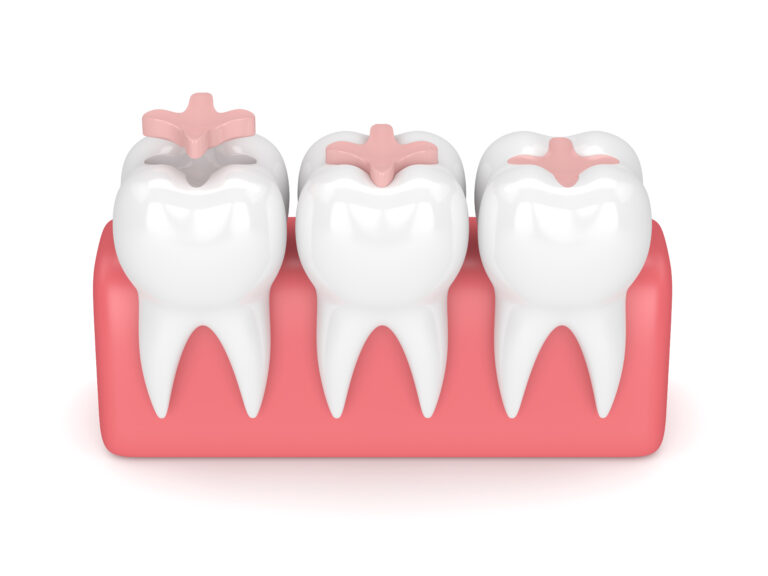What is a dental sealant?
A dental sealant is a plastic material that is usually applied to the back teeth, or premolars and molars. This plastic resin bonds into the depressions and grooves, or pits and fissures, of the chewing surfaces of those molars.
How do dental sealants work?
Although thorough brushing and flossing helps remove food particles and plaque from smooth surfaces of teeth, toothbrush bristles cannot reach deep enough into depressions and grooves to extract all of the food and plaque that may have accumulated there. Sealants work by protecting these vulnerable areas, acting as a barrier and protecting enamel from plaque and acids, thus preventing food particles and plaque from decaying in pits and fissures.
Is sealant application a complicated procedure?
No. Sealants are very easy for your dentist to apply; the process only takes a couple of minutes for each tooth.
First, the teeth that will be sealed are cleaned. The chewing surfaces are then roughened with an acid solution to help the sealant to better adhere to the tooth. The sealant is then ‘painted’ onto the tooth enamel, where it bonds directly to the tooth and hardens. Sometimes, a special curing light is used to help the sealant harden.
As long as the sealant remains intact, the tooth surface will be protected from decay. Sealants can withstand the force of normal chewing very well, and will usually last several years before a reapplication is needed. During your regular dental visits, your dentist should check the condition of the sealants and reapply them when necessary.

Who qualifies for sealants?
The development of pit and fissure decay begins early in life, making children and teenagers excellent candidates for the procedure. The protection provided by the sealants is, however, beneficial for patients of all ages.
What else can I do to prevent tooth decay?
Preventing tooth decay and maintaining a healthy mouth is a matter of good oral hygiene. Twice-daily brushing with an American Dental Association approved fluoride toothpaste, regularly cleaning between the teeth with floss or other interdental cleaners, eating a balanced diet and limiting snacks, and visiting your dentist regularly are all key components of a healthy smile. With a proper dental care routine, dental sealants can be a great ally in your fight against tooth decay and disease. Ask your dentist about whether sealants can put a little extra power behind your prevention program.
